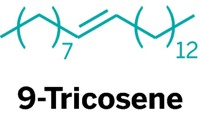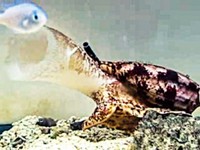Advertisement
Grab your lab coat. Let's get started
Welcome!
Welcome!
Create an account below to get 6 C&EN articles per month, receive newsletters and more - all free.
It seems this is your first time logging in online. Please enter the following information to continue.
As an ACS member you automatically get access to this site. All we need is few more details to create your reading experience.
Not you? Sign in with a different account.
Not you? Sign in with a different account.
ERROR 1
ERROR 1
ERROR 2
ERROR 2
ERROR 2
ERROR 2
ERROR 2
Password and Confirm password must match.
If you have an ACS member number, please enter it here so we can link this account to your membership. (optional)
ERROR 2
ACS values your privacy. By submitting your information, you are gaining access to C&EN and subscribing to our weekly newsletter. We use the information you provide to make your reading experience better, and we will never sell your data to third party members.
Environment
Escape Tactics
Sea hare sows confusion among enemies with chemical smoke screen
by Sophie L. Rovner
April 4, 2005
| A version of this story appeared in
Volume 83, Issue 14
CHEMICAL ECOLOGY

To some marine creatures, a sea hare looks like a perfectly reasonable--and possibly defenseless--meal. But the sea hare, it turns out, can deploy a sophisticated chemical arsenal that befuddles predators' senses, giving it a chance to escape, according to a new study by Charles D. Derby, a neurobiologist at Georgia State University, and colleagues there and at the University of Washington, Seattle (Curr. Biol. 2005, 15, 549). The findings represent the first neurophysiological evidence for sensory disruption as a "mechanism of antipredatory chemical defense," the authors say.
By contrast with more direct methods for repelling predators, such as toxic or noxious chemicals used by animals like blister beetles and skunks, the sea hare's reaction represents "a new type of indirect defense," note Heather L. Eisthen and Rufus Isaacs of Michigan State University in a commentary in the journal.
When threatened by a predator such as a spiny lobster, the sea hare releases a cloud of ink and an opaque white secretion known as opaline. Derby and his colleagues determined that the viscous mixture "contains millimolar quantities of amino acids that stimulate chemoreceptor neurons in the lobster's nervous system." Major amino acids present include taurine, cysteine, and lysine; other components in the mixture include ammonium ion and urea.
A lobster exposed to these chemicals responds with behavior associated with foraging and feeding. According to Eisthen and Isaacs, the cloud of chemicals released by the sea hare "smells like food," and it distracts the lobster, which tries to eat the phantom prey.
Furthermore, the ink and opaline elicit grooming of the lobster's antenna and mouth parts, "suggesting that the viscous secretions may interfere with the sensory hairs on the lobster's appendages," Eisthen and Isaacs note. In addition, an as-yet-unidentified component of the opaline serves as a feeding inhibitor. The lobster, in other words, is receiving contradictory and absorbing messages--and the sea hare gets to live another day.





Join the conversation
Contact the reporter
Submit a Letter to the Editor for publication
Engage with us on Twitter